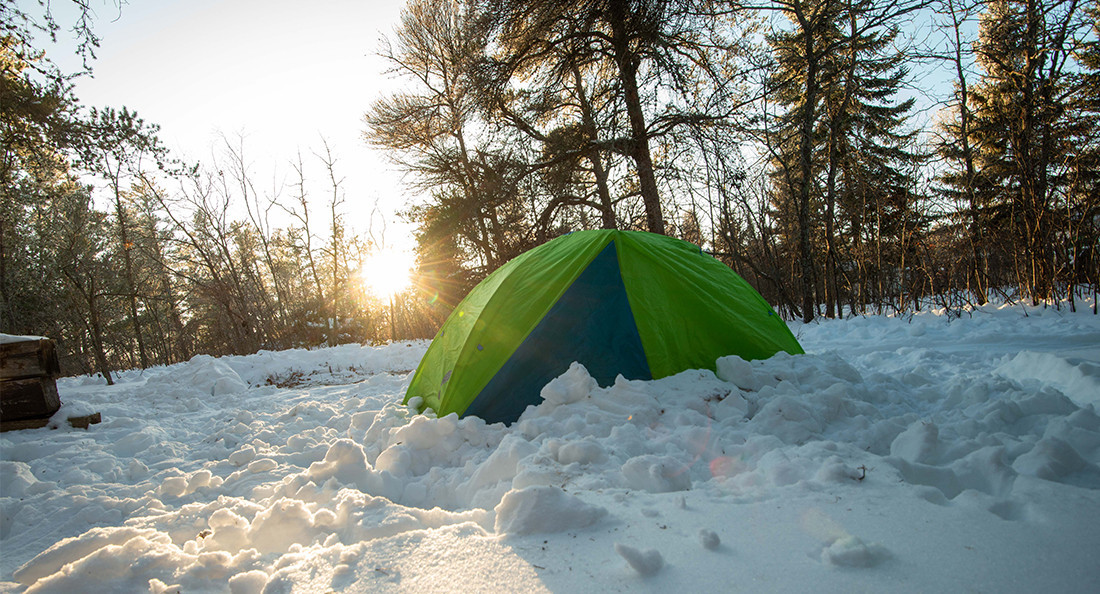Demystifying winter camping
Experienced campers share advice for safe and fun winter excursions
Winter camping can be an enigma to many. The main differences between winter and summer camping include access to washroom facilities, water filtering and what type of tent is used. The necessary equipment differs from that typically used for summer camping, and it can be more expensive to get started. There is a lot to know to ensure a safe camping experience in the wintertime.
“To specify how winter camping is different than other seasons would take a complete book to explain,” Davey Bailey, an outdoor enthusiast with over 30 years of experience, says.
“Things like the gear being different, and processing water is melting snow versus filtering water. The layering of clothes and moisture management are top priorities in the winter ... Obstacles unseen under the snow and condensation in your shelter are very real hazards.”
Bailey talks about outdoor fun and adventure on his YouTube channel, LeatherTramp Expeditions. He explains that, in winter camping, everything takes longer, and the days are shorter.
According to Matt Peters, an experienced certified Paddle Canada and Outdoor Council of Canada instructor and four-season wilderness guide at Wilderland Adventure Company, what makes winter camping different is the presence of snow.
While many people hot tent (camping in a tent equipped with a jack for a wood stove), many others are cold-tent campers. Cold tenting is closer to traditional summer camping. Peters has found people are more interested in hot tenting in cold weather.
“I call it a modified traditional winter camping. We use woodstove-heated tents but plastic sleds and more modern equipment,” Peters says.
For Garrett Fache, an employee at Wilderness Supply, as well as a guide and adventure photographer at Wild House Media, the biggest difference is the silence.
“Since snow muffles so many sounds that in summer fill up the ambient noise, winter camping has this incredible ability to just be quiet. It’s so unique and special,” Fache says.
“Winter camping is quiet, peaceful and, most importantly, usually doesn’t have others out where I am,” rusty Jensen, an outdoor enthusiast with an extraordinary amount of personal and professional experience, says.
Jensen has worked for the Horse Mounted Wilderness Law Enforcement park ranger and wilderness patrols, with backcountry duties and experience at the Grand Canyon, Yosemite, Shenandoah, Everglades, Theodore Roosevelt and Redwood National Parks before moving to Canada.
Peters believes the challenge of winter camping is the temperature, which is the same in the backcountry or the backyard. He says the solution lies in contingency planning.
“In a nutshell, winter camping is different because of the complexity of the experience ... Once you are able to be comfortable in the cold, find yourself enjoying the winter landscape and are confident in your ability to stay warm, we expand into longer and more remote trips,” Peters says.
Front-end winter camping will often have heated washrooms, while backcountry campsites may have backcountry toilets if on a maintained route. However, campers along a route that doesn’t have toilets during the summer should follow the Leave No Trace ethics, which involve being 200 feet from a trail, campsite or water source and digging a hole that’s six to eight inches deep.
In winter, rather than dig a hole in frozen ground, it’s best to let waste freeze in the snow, pick it up in a plastic bag and carry it out.
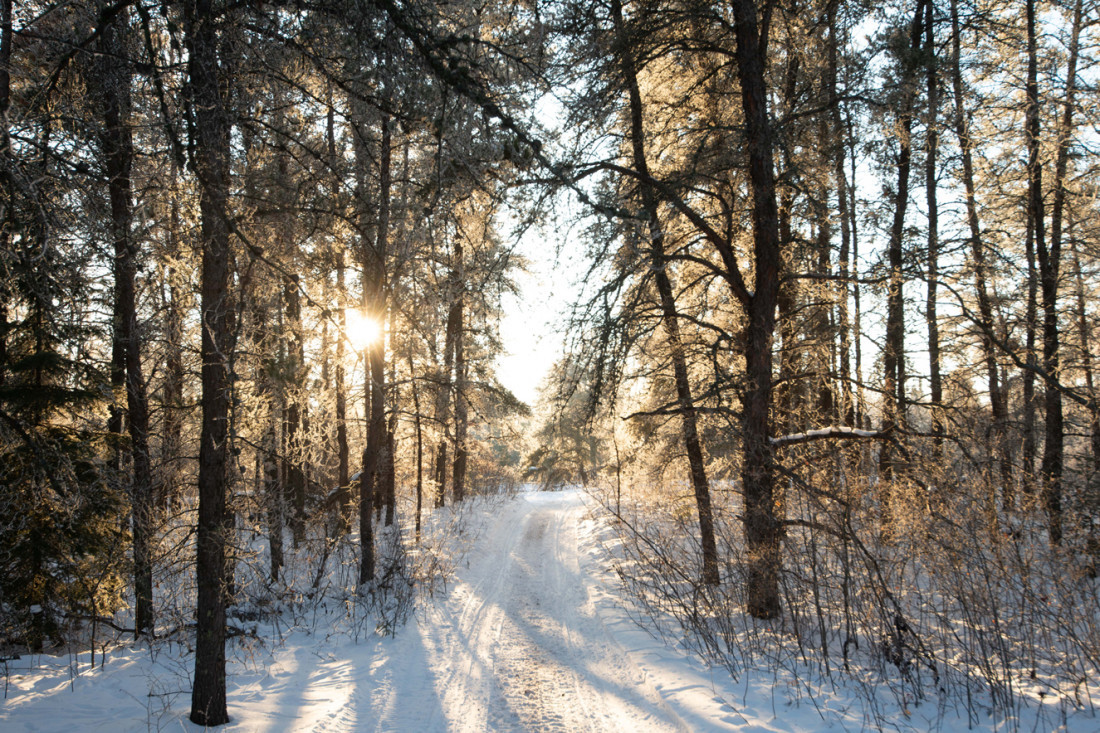
“In a nutshell, winter camping is different because of the complexity of the experience.”
- Matt Peters, instructor and four-seasons wilderness guide
Getting started
“Know yourself and (your) experience,” Bailey says. “Get a white gas stove, as a canister stove is virtually useless in frigid temps.”
Lower temperatures cause low pressure in canister stoves, which prevents them from working correctly. Therefore, liquid-fuel stoves are recommended for winter camping.
“Everything else I use is three-season gear. This again goes back to layering. I use two to three sleeping bags, because a Western Mountaineering sleeping bag is $1,100. Layering clothing is warmer than a snowsuit,” Bailey says.
Go “with someone with skills and experience winter camping. I started out the same way and grew in my abilities and confidence. Camping should be enjoyable, and having folks around you that are comfortable in a challenging environment where you may be just starting to experience will help you navigate the challenges you will face,” Peters says.
Fache’s suggestion is along the same lines.
Going “with someone who has done it before is a big one. I also think it can be great to do a test run for a night in a backyard or somewhere that has immediate access to warmth in case things go wrong,” he says.
“Go out and do it,” Jensen says. “The only way you will learn is through experience.”
When it comes to sourcing water, Jensen suggests melting ice and mentions it takes more snow than a camper might expect to get a usable amount of water. He also suggests avoiding wet, cold weather, such as fog and high humidity, or melting temperatures during the day that freeze overnight.
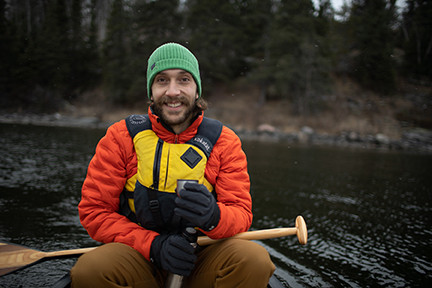
Garrett Fache is a guide and adventure photographer at Wild House Media.
How to get there
Fache hauls in his gear on foot, ski or fat bike (a bicycle with oversized off-road tires). When skiing, Fache attaches a sled to his pack and tows along some extra gear.
Peters considers there to be two types of camping: static and dynamic.
“Static is where you head out and set up a camp and hang out. This is typically your car-camping scenario. Dynamic camping or ‘tripping’ is where your day is filled with travel to campsites or trailheads. Both have unique things that make them fun.”
Peters pulls outfitted sleds packed with equipment.
Jensen skis in and uses a pulk, which is a variety of winter sled. He finds skiing easier than snowshoeing for camping. Snowshoeing is a fun workout, but cross-country skiing is best to avoid becoming too sweaty and damp.
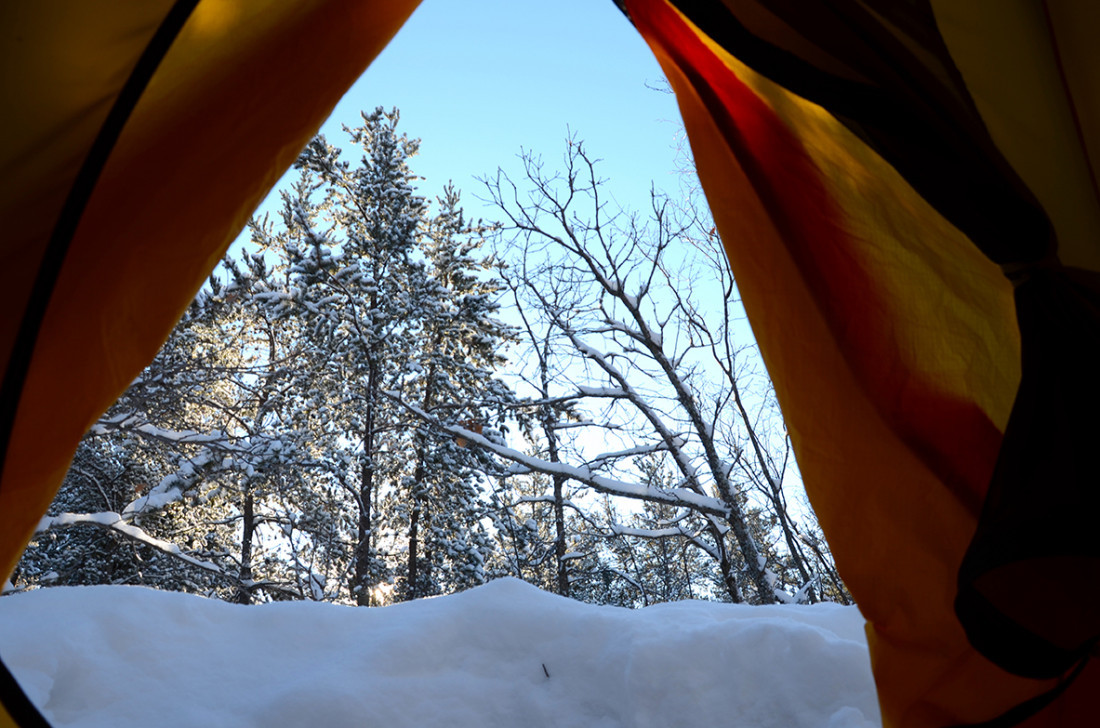
“Winter camping is quiet, peaceful and, most importantly, doesn’t usually have others out where I am.”
- rusty Jensen, outdoor enthusiast
Bring along something fun!
Fache enjoys bringing along a deck of playing cards and snowshoes.
“The toboggan you use to carry extra gear can be a blast to go rip down hills” Fache says.
Jensen likes to bring along a good book. Peters enjoys playing cards in groups, good food, time on the trail, a warm drink, campfires, fishing and exploring the area.
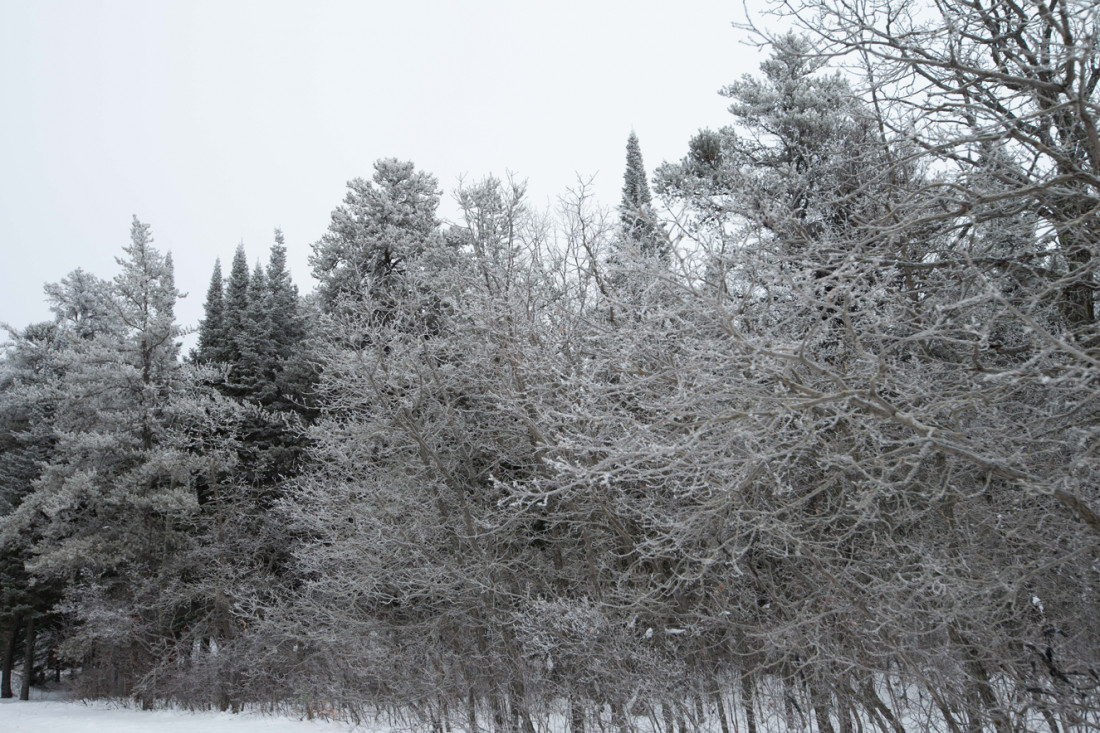
“To specify how winter camping is different would take a complete book to explain.”
- outdoor enthusiast Davey Bailey
Essentials
Everyone has a different opinion on what is essential for camping. However, in winter camping, essentials follow the same theme: safety.
Fache considers an emergency foil bivy sack an essential.
“It is so small but can pack a serious amount of warmth in an emergency heat situation,” he says.
Jensen says it is essential to know the gear and how to manage gear failures.
“Have a backup plan and practice that plan ... I winter camp solo. Going solo requires leaving good information about my plans, (including) route, destination, duration, side-adventure possibilities,” he says.
Peters believes essentials to be a warm sleeping system, food, hot drinks, layers, footwear, wool socks, dry feet, the ability to start a fire, a first-aid kit and a back-up plan.
“Always have a detailed trip plan and leave it with someone. Have a reliable method of communication ... (know) your limits and reasonably stay within your abilities and resources. Plan for more time than you would in the warmer months. Always have ample travel time during winter conditions and never be afraid to turn back,” Peters says.
Favourite places
People can be a little secretive about their favourite places to winter camp, as the point seems to be to get away.
Peters enjoys backcountry camping in Riding Mountain National Park or Whiteshell Provincial Park.
“Front-country winter camping is wonderful in Riding Mountain, as they now have campsites and access to heated washrooms and a shared warming shack,” Peter adds.
Fache’s favourite places are Nopiming Park or the Bloodvein River. Bailey would rather be in the mountains, but his Manitoba pick is Whiteshell Provincial Park.
“It has the terrain I love ... big rocks, big trees, and ruggedness not found on the open plains. Last year, I did four days in the open prairies. This year, five days in the Whiteshell ... they both have their beauty, but I prefer a rugged landscape,” Bailey says.
Fache says winter camping isn’t as accessible as summer camping, since gear is more expensive and not as readily available to rent. He suggests a low-cost option is to borrow equipment from a friend.
“It can be easy to make friends who have gear! The communities are very welcoming,” Fache says.
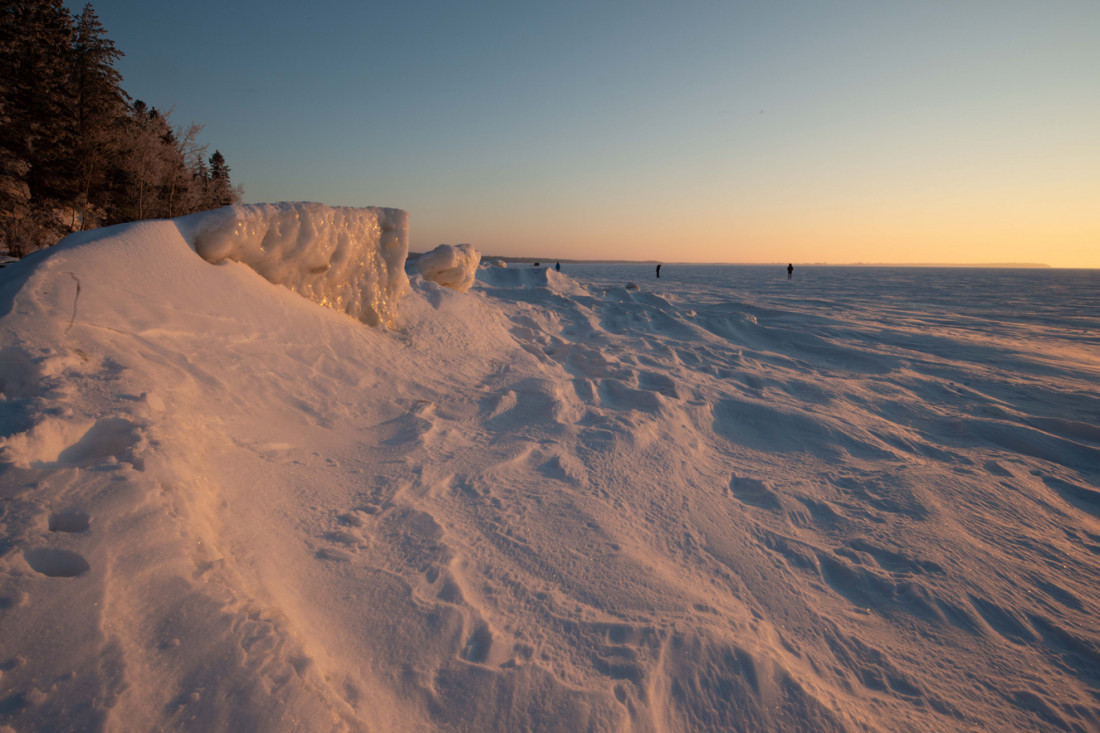
Davey Bailey says that winter camping on prairies and on mountains “both have their beauty, but I prefer a rugged landscape.”
Tips and tricks
Peters
- Pack a thermos and keep a hot or warm beverage in it.
- Avoid alcohol, as it causes dehydration.
- Plan simple meals.
- Pack butter and/or chocolate to mix in hot chocolate to give you more calories.
- Always pack your communication device in an inside pocket of your jacket to keep warm with your
- body heat.
- Always pack two ways to ignite a fire: matches and a lighter.
Fache
- A Nalgene (or other water bottle) full of warm water in your sleeping bag is really nice through the night.
Bailey
- During the day, keep water bottles upside down. Water in your bottle will freeze where the air is inside the bottle, and for storage during day or night at camp, bury them in the snow. Snow is an insulator and will keep the water right at freezing temperature.
Jensen
- Don’t sweat! The key is not to sweat. Go slow, take breaks.
- Put damp items like socks or long johns or other items you need to keep warm in your sleeping bag.
“I probably don’t even stake my tent on half of my trips. If it’s not overly windy, I’m not overly concerned about blowing my tent away once I get my gear in it. I do stake my rain fly so that my vestibule zippers work. If the ground is too frozen to pound the stakes in an adequate depth, then I would use a deadman (anchor). Once you pack your camping site down with your snowshoes and/or skis and wait an hour or so, it gets quite firm, and you can get a real good purchase in the snow.”
General
- Make sure the trail you are using is appropriate for your activity. Some trails have specific usage: snowshoeing, skiing or hiking.
For more information on winter camping, check out Bailey’s YouTube channel, LeatherTramp Expeditions. Information specific to parks and trails can be found on the Parks Canada website at pc.gc.ca. For those less confident about braving the outdoors alone, Wilderland Adventure Company provides organized wilderness trips. Follow Fache’s adventures @wildhousemedia on Instagram.
Published in Volume 75, Number 16 of The Uniter (January 28, 2021)

